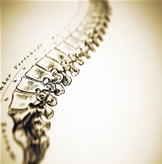 After a thorough examination and diagnosis, treatment may include Osteopathic Manipulative Treatment (OMT), medications, various types of injections and / or back surgery.
After a thorough examination and diagnosis, treatment may include Osteopathic Manipulative Treatment (OMT), medications, various types of injections and / or back surgery.
About the Treatment
- Initially, treatment may be twice a week for two to four weeks (in rare cases, treatment may be three times a week)
- Follow-up treatments are usually not more frequent than once or twice a week for a certain period of time
The D.O. will reexamine the patient during each of the visits to see if there is appropriate progress and to set realistic time-based goals for treatment. Objective parameters are used to determine if there is adequate progress:
- Improved patient function (ability to work, activities of daily living, the ability to move and perform certain activities, etc)
- Reducing the need for pain medication.
- The patient report of pain perception.
Patient Outcome
The goal of treatment is to improve the patient's ability to work independently with minimal or no pain, while maintaining their independence through appropriate home exercise, nutrition and lifestyle. Accordingly, in a situation of chronic pain and while retaining the function, treatment is usually reduced to a minimum however, a reasonable number of visits, but may require a limited number of additional treatments during an episode of exacerbation.
Examinations Are Thorough
First, the doctor will order a complete medical history, including specific questions about the history of episodes of back pain and previous treatments.
The information is also important to the osteopathic physician is whether there has been some significant past trauma, falls or accidents, even if it happened long ago. The reasoning behind this is that it is not unusual for an event to cause a series of compensatory changes in the musculoskeletal system in time. The pain of today may be the result of the body's inability to make more.
The DO may order the standard tests (eg blood and urine) and imaging (eg X ray, bone scan, CT scan, MRI, etc) as part of diagnosis.
The review, along with a specific neurological and orthopedic evaluation, emphasis will be on a complete structural and functional assessment of the musculoskeletal system. This usually includes:
- Visual assessment of posture, spine, muscles, balance and gait.
- Physical palpation of the back, legs and arms to evaluate the quality and movement of tissues and body structure.
- The movement of the back, legs and arms, verification of joint restriction and / or pain.
One of the objectives of the review is to determine whether one or more relevant somatic disorders that require treatment. The term "somatic dysfunction" is an accepted diagnosis according to the adaptation of the Hospital of the International Classification of Diseases. It denotes the failure or alteration of the related components of the somatic (body framework) system, including bones, joints, muscles and fascia, and vessels associated with the blood, lymph vessels and nerves.


 Physical therapy focuses on improving muscle (soft tissue) flexibility and strength, joint biomechanics (movement), and proprioception (awareness of position), resulting in increased balance, coordination, kinesthetic awareness, and improving position. Physiotherapy reduces pain and dysfunction correcting postural and muscular imbalances, removing muscles spasms, trigger points, adhesions and fibrous tissue.
Physical therapy focuses on improving muscle (soft tissue) flexibility and strength, joint biomechanics (movement), and proprioception (awareness of position), resulting in increased balance, coordination, kinesthetic awareness, and improving position. Physiotherapy reduces pain and dysfunction correcting postural and muscular imbalances, removing muscles spasms, trigger points, adhesions and fibrous tissue.